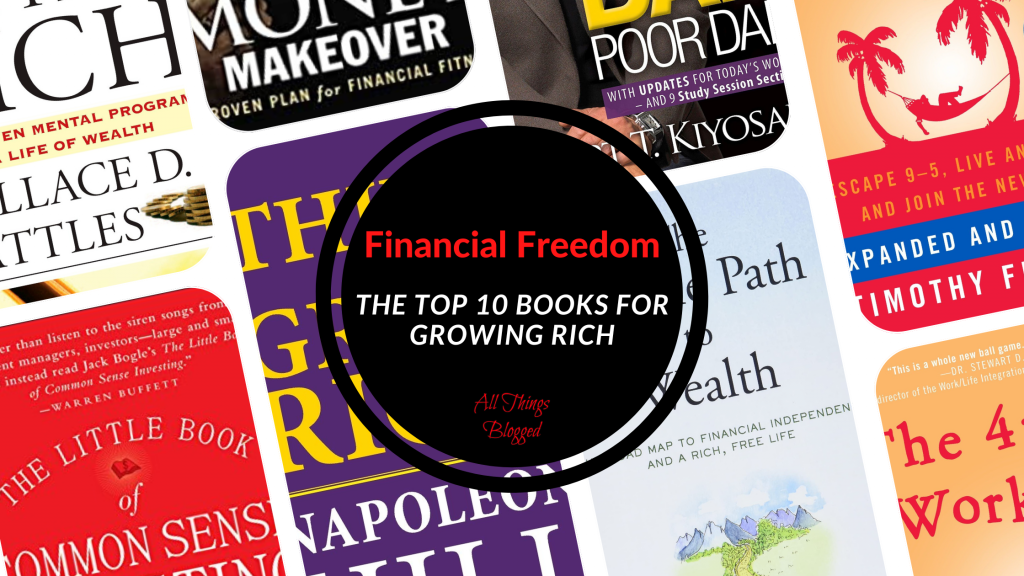
I am thrilled to share with you these 10 amazing books that will help you discover the secrets to achieving financial freedom and live a life of comfort and ease, free from the shackles of stress and anxiety of financial worries.
Financial freedom is all about living a comfortable life without worrying about money. It’s a state that many of us strive for, but it can be difficult to achieve without the right knowledge and tools.
It is the ability to live life on your own terms and not be constrained by the need for a steady paycheck. Achieving financial freedom requires a combination of smart financial planning, disciplined saving, and wise investment strategies.
It can be achieved by creating a budget, eliminating debt, saving aggressively, investing for the future and living below your means.
To sum it up in simple words I quote a friend of mine who told me this several years ago. “Baby you want to live like a queen? No problemo! Just make a budget, wave goodbye to debt, save like a mad person, think long-term, and don’t spend more than you make.” Sounded pretty simple but actually the hardest to practice.
Many experts and successful individuals have written books on this topic, offering their advice and insights on how to grow wealth and achieve financial independence.
Here are the top 10 books that offer valuable insights and practical advice for growing rich and achieving financial freedom:
Want to live like a millionaire? Want to know the secret to living a life without money worries? These books are the key to your financial liberation!
They’re packed with practical tips and real-life examples. These books are like a treasure chest of financial wisdom and an essential for your journey to financial liberation. Don’t miss this chance to live like royalty!”
“The key to financial freedom is understanding that your income is a tool, not a goal. Use it wisely and it can take you places you never thought possible.”
ABP

Rich Dad, Poor Dad” by Robert Kiyosak
This book is a classic in the personal finance world and is a must-read for anyone looking to achieve financial freedom.
It is a memoir that tells the story of the author’s journey to financial freedom and the lessons he learned from his wealthy “rich dad.”
The book emphasizes the importance of financial education and the difference between working for money and having money work for you through investing in assets such as real estate, stocks, and small businesses.
It also encourages readers to think differently about money and to not rely on traditional methods of earning a living, such as getting a high-paying job or saving money in a traditional savings account.
The book encourages readers to take control of their financial future and to become financially independent.
“The only difference between a rich person and a poor person is how they use their time.”
Robert Kiyosak

The Intelligent Investor” by Benjamin Graham
A classic in the field of investing and is often referred to as the “bible of value investing” and is a must-read for anyone looking to build wealth through investing.
It is a guide for individuals on how to invest in the stock market in a smart and thoughtful way.
The book provides a framework for long-term investing and emphasizes the importance of thorough research and analysis in making investment decisions.
It also stresses the importance of diversification and the need to have a margin of safety when investing in order to protect against downside risk.
The book is written for the layperson and provides a detailed and in-depth look at the principles of value investing.
It provides a comprehensive guide to investing in stocks, bonds, and other securities, and it is often seen as a must-read for anyone interested in investing.
“The intelligent investor is a realist who sells to optimists and buys from pessimists.”
Benjamin Graham

The Total Money Makeover” by Dave Ramsey
“The Total Money Makeover” is a practical, step-by-step guide to achieving financial freedom that emphasizes the importance of taking control of one’s finances and making smart financial decisions.
It is focused on helping people take control of their finances and become debt-free by providing a step-by-step plan for achieving financial freedom. The book’s main message is that by following a strict budget, cutting expenses, and making smart financial decisions, anyone can take control of their money and achieve financial stability.
The book lays out seven “Baby Steps” that readers can take to achieve financial freedom:
- Save $1,000 in an emergency fund
- Pay off all debt using the “debt snowball” method
- Save 3-6 months of expenses in an emergency fund
- Invest 15% of income in retirement
- Start saving for college
- Pay off your home early
- Build wealth and give generously.
The book also stresses the importance of creating a budget and sticking to it, as well as the dangers of consumer debt and the importance of living below one’s means.
It also includes inspiring stories of individuals who have successfully implemented the author’s plan and achieved financial freedom.
“You must gain control over your money or the lack of it will forever control you.”
Dave Ramsey

The Millionaire Mind” by Thomas Stanley
The book is based on the author’s research of millionaires and their habits, and it aims to help readers understand the mindset and behaviors of wealthy individuals. It also provides practical advice on how to develop the same habits and mindset in order to achieve financial success.
The book’s main message is that the wealthy think differently about money and are more likely to focus on creating income-producing assets, rather than just earning a high salary. It also highlights the importance of budgeting, saving, and investing for the long-term.
It also looks into the differences between the wealthy and the non-wealthy in terms of their spending habits and financial priorities.
The author argues that the wealthy tend to be more frugal, avoid consumer debt and focus on investing in income-producing assets, such as rental properties or small businesses.
It book also emphasizes the importance of setting financial goals and taking consistent action to achieve them.
Overall, “The Millionaire Mind” provides an in-depth look into the behaviors and habits of the wealthy and offers practical advice on how to develop those habits in order to achieve financial success.
“Millionaires are not content with just surviving, they want to thrive.”
The Millionaire Mind
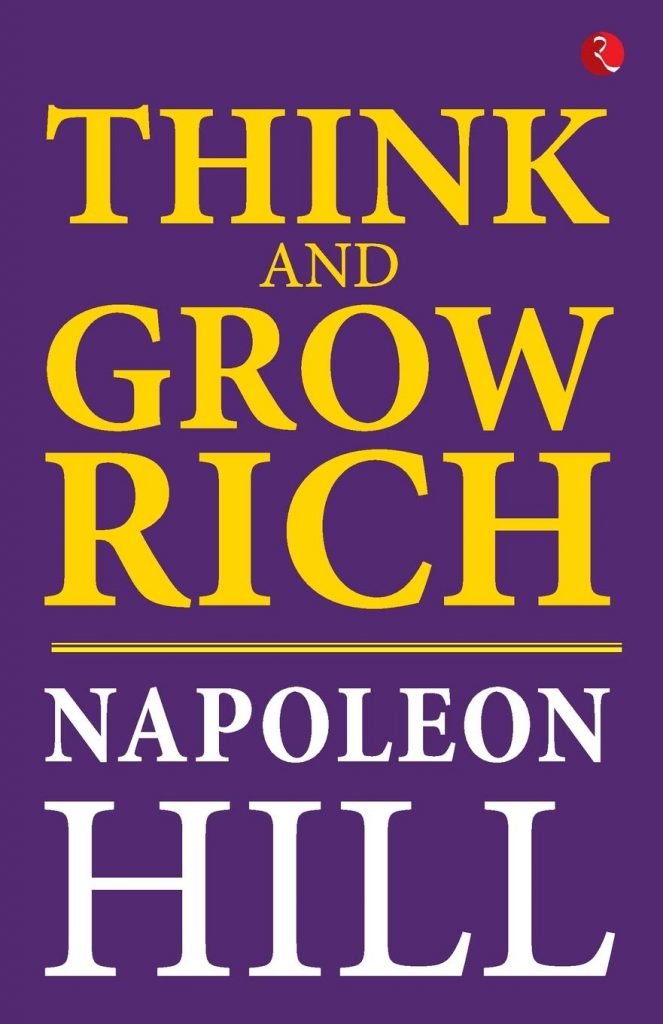
Think and Grow Rich” by Napoleon Hill
“Think and Grow Rich” is a personal development and self-help book published in 1937 and has since become a classic in the field of personal development. It is based on Hill’s research of over 500 successful individuals, including industrialists, entrepreneurs, and inventors.
The book’s main message is that anyone can achieve success and wealth by developing a positive attitude, setting specific goals, and taking consistent action to achieve them. The book also emphasizes the importance of visualization, persistence, and the power of the subconscious mind in achieving success.
It is divided into 13 chapters, each of which focuses on a different principle for achieving success. Some of the key principles include:
- The power of the mind
- The power of desire
- The power of faith
- The power of auto-suggestion
- The power of the mastermind
- The power of the sixth sense
- The power of sex transmutation
“Think and Grow Rich” is a motivational and practical guide that provides readers with the tools and mindset needed to achieve success in any area of their life, including career, finances, and personal relationships.
The book encourages readers to think positively, set goals, and take consistent action to achieve them. It is often considered a must-read for anyone looking to improve their life and achieve their full potential.
“You are the master of your own destiny. You can influence, direct and control your own environment. You can make your life what you want it to be.”
Napoleon Hill

The Little Book of Common Sense Investing” by John C. Bogle
This book offers a simple and effective approach to investing in the stock market and emphasizes the importance of low-cost, passive investing, and provides a straightforward and simple approach to investing.
Bogle encourages investors to focus on their long-term goals and avoid impulsive decisions based on short-term market fluctuations.
The book is written in an easy-to-understand language and is suitable for investors of all levels of experience, it is considered a classic in the field of personal finance and investing.
The book’s main message is that investors are better off investing in low-cost index funds rather than trying to beat the market through active management or stock picking.
The author argues that most professional money managers and stock pickers fail to beat the market, and that the best way to achieve long-term investment success is to invest in a diversified basket of stocks that tracks the market, rather than trying to pick individual winning stocks.
Bogle also explains the power of compounding returns over time and the importance of staying invested for the long-term, avoiding market timing and chasing hot investments.
He also encourages investors to diversify their portfolio, have realistic expectations and avoid unnecessary costs such as high-fee mutual funds, and avoid trying to time the market.
“The Little Book of Common Sense Investing” is a practical and easy-to-understand guide that provides readers with a clear and simple approach to investing in the stock market. It is often recommended for those looking to gain a better understanding of the principles of index investing and how to achieve long-term investment success.
“Don’t look for the needle in the haystack. Just buy the haystack!”
John C. Bogle
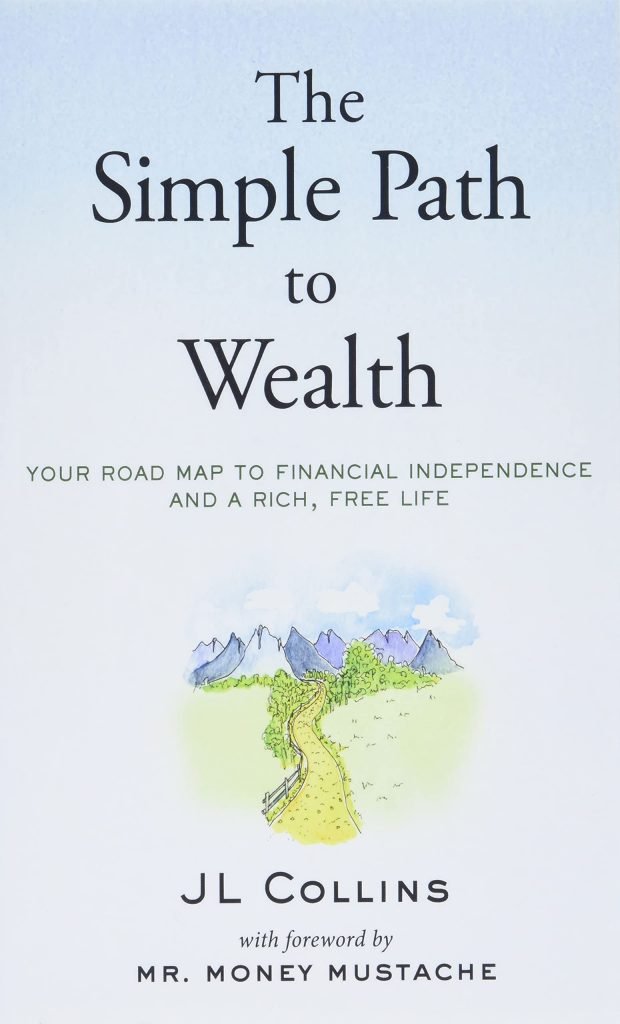
The Simple Path to Wealth” by JL Collins
A must-read for anyone looking to achieve financial freedom through investing. It is a comprehensive guide to investing in low-cost index funds and provides valuable insights on the importance of living below your means, saving aggressively, and investing for the long term.
“The Simple Path to Wealth” is a personal finance and investing book written by JL Collins, a retired stock market investor and financial blogger. The book is a guide to investing and personal finance, aimed at helping readers achieve financial independence and retire early.
The book’s main message is that investing in low-cost index funds is the simplest and most effective way to build wealth over time. The author argues that most people do not need to become stock market experts or try to time the market to achieve financial success. Instead, they should focus on saving and investing a significant portion of their income in low-cost index funds, and avoiding common mistakes such as trying to time the market or chasing hot investments.
The book also covers other personal finance topics such as budgeting, saving, and managing debt. It also encourages readers to adopt a minimalist lifestyle, and prioritize saving and investing over consumption.
“The Simple Path to Wealth” is a practical and easy-to-understand guide that provides readers with a clear and simple approach to investing and personal finance. It is often recommended for those looking to gain a better understanding of the principles of index investing and how to achieve financial independence and retire early.
“It’s not about knowing what will happen, it’s about being prepared for what could happen.”
The Simple Path to Wealth
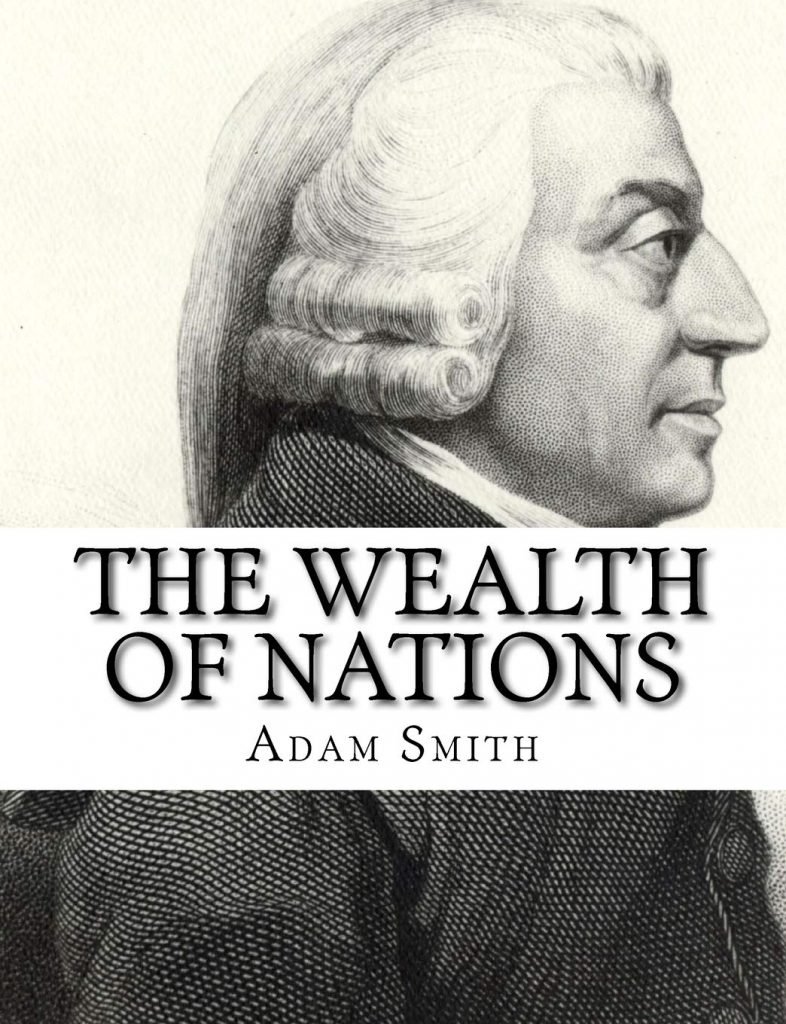
The Wealth of Nations” by Adam Smith
First published in 1776 this book is considered to be the first work of modern economics and is widely considered to be one of the most important works in the field and is a must-read for anyone interested in understanding the principles of wealth creation.
It provides a detailed analysis of the factors that contribute to economic growth and prosperity, including the importance of free markets and the division of labor.
The book’s main message is that the wealth of a nation is determined by the production and exchange of goods and services, rather than by the accumulation of gold or other forms of money.
Smith discussed the concept of the “invisible hand” in which the self-interest of individuals leads to the benefit of society as a whole. He also discussed the role of government in the economy, arguing that government intervention should be limited to protect property rights and maintain a system of justice.
The book is divided into five books, each of which covers a different aspect of economics. Some of the key topics covered include: the nature and causes of the wealth of nations, the history of economic thought, the division of labor, the principles of political economy, and the role of money in the economy.
“The Wealth of Nations” is a classic work that laid the foundation for modern economics and continues to be widely read and studied today. It is a seminal work that provides a comprehensive understanding of the principles of economics, and its ideas and concepts are still widely used and studied today.
“No society can surely be flourishing and happy, of which the far greater part of the members are poor and miserable.”
Adam Smith
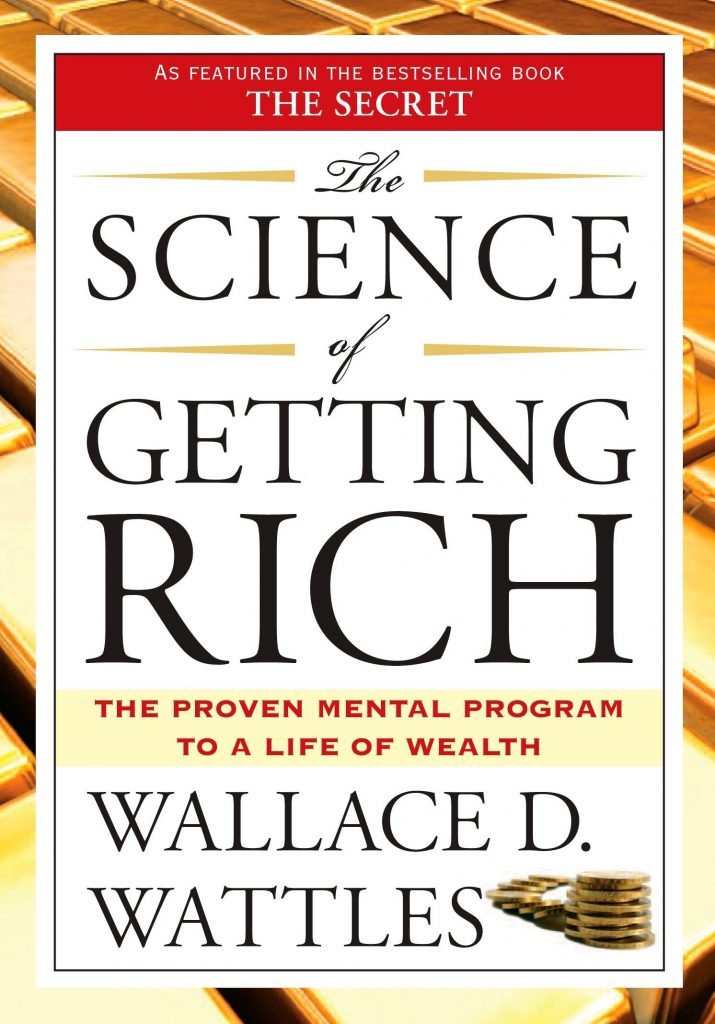
The Science of Getting Rich” by Wallace D. Wattles
The Science of Getting Rich provides a step-by-step plan for creating wealth and offers valuable insights on the importance of positive thinking and the power of the mind in creating wealth.
It is a guide to achieving wealth and success, and it is considered to be one of the early works in the genre of personal development and self-help literature.
The book’s main message is that the key to getting rich is to first clearly define what you want, and then take consistent action towards achieving it.
The book is divided into 17 chapters, each of which covers a different aspect of the “science of getting rich.” Some of the key topics covered include: the laws of nature, the power of thought, the importance of clear thinking, the importance of a definite purpose, the importance of persistence, and the importance of gratitude.
“The Science of Getting Rich” is a classic work that continues to be widely read and studied today. It offers a unique perspective on wealth creation and personal development, and its ideas and concepts are still applicable today.
It encourages readers to be clear about what they want and to focus on creating value and providing service to achieve it. It also stresses on the power of positive thinking and gratitude, and encourages the reader to align themselves with the laws of nature to achieve their goals.
“The rich man is the one who knows how to make money, while the poor man is the one who only knows how to spend it.”
The Science of Getting Rich
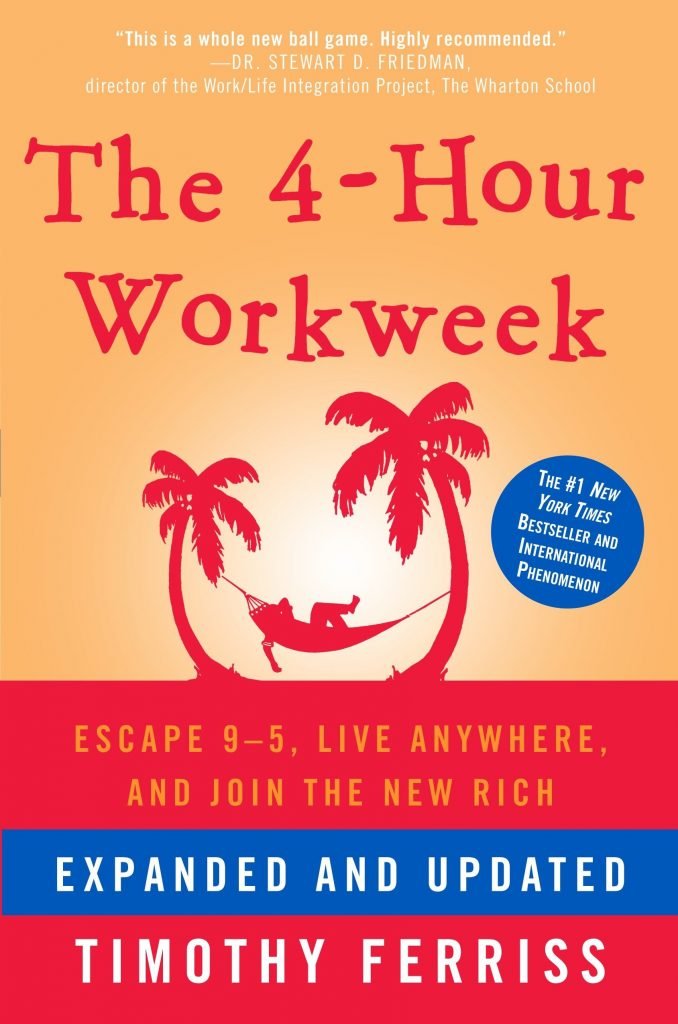
The 4-Hour Work Week” by Timothy Ferriss
This book offers a blueprint for achieving financial freedom through entrepreneurship, automation, and lifestyle design. Written by Timothy Ferriss, an entrepreneur and author, it is a valuable resource for anyone looking to achieve financial independence through creative thinking and innovative approaches to work and life.
A guide to achieving a lifestyle of freedom and flexibility through the use of technology, outsourcing, and automation. It is marketed as a blueprint for escaping the 9-5 workweek and achieving financial independence.
The book’s main message is that traditional work models are outdated, and that the internet and technology have made it possible to achieve a lifestyle of freedom and flexibility.
Ferriss argues that by outsourcing and automating tasks, and by embracing the concept of “lifestyle design,” it is possible to achieve a 4-hour workweek and live life on one’s own terms.
The book is divided into four parts: “Definition,” “Elimination,” “Automation,” and “Liberation.” Each part covers a different aspect of lifestyle design and achieving a 4-hour workweek.
Some of the key topics covered include: the concept of “mini-retirements,” creating a “muse” or a business that generates passive income, using technology to automate tasks, and creating a “New Rich” lifestyle.
“The 4-Hour Work Week” is a popular book that has been widely read and discussed since its publication. It offers a unique perspective on work-life balance and personal development, and its ideas and concepts have inspired many people to re-think their career and lifestyle choices.
The book encourages readers to be creative and think outside the box, and it stresses the importance of taking control of one’s life, and achieving a balance of time and money.
“The question you should be asking isn’t, ‘What do I want?’ or ‘What are my goals?’ but ‘What would excite me?'”
Timothy Ferriss
“Financial freedom is not a destination, it’s a journey. It requires constant effort, planning, and adaptation.”
ABP
In conclusion, achieving financial freedom is a lifelong journey that requires knowledge, discipline, and hard work.
The books listed above offer valuable insights and practical advice on how to achieve financial freedom through investing, budgeting, saving, passive income, financial planning, entrepreneurship, and developing a wealth mindset. They are a great starting point for anyone looking to grow their wealth and achieve financial independence.
Furthermore, it’s important to have a clear financial goals and a plan to achieve them. Building wealth takes time and patience, but with the right mindset and the right tools, financial freedom can be achieved. And remember, it is important to have financial knowledge so you can make smart decisions and build your wealth.
I hope you found this blog informative and enjoyable. If you are interested in viewing my other content, please click here.
